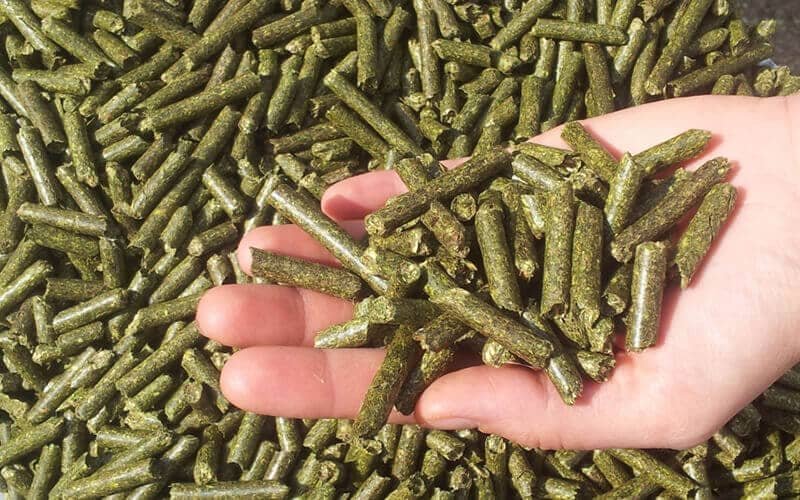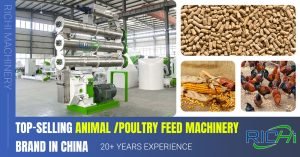The versatility of modern feed manufacturing equipment has prompted many farmers and feed producers to explore the potential of their existing machinery. A common question arises: can a goat feed pellet making machine effectively process hay pellets? This article examines the feasibility, challenges, and considerations of using goat feed pellet machines for hay pellet production.
Understanding Hay and Its Characteristics
Hay is an essential forage crop used in livestock feeding, including goats. It consists of grasses, legumes, or other herbaceous plants that have been cut, dried, and stored. Common types of hay include:
- Alfalfa Hay
- Timothy Hay
- Orchard Grass Hay
- Bermuda Grass Hay
Characteristics of Hay:
- High Fiber Content: This can complicate pellet formation.
- Variable Protein Levels: Protein content depends on the type and cutting stage.
- Low Moisture Content: Typically between 10-15%.
- Long Stem Fibers: These fibers require significant size reduction before pelleting.
These characteristics present unique challenges in the pelleting process.
Goat Feed Pellet Making Machines: An Overview
Goat feed pellet machines are designed to process various ingredients into compact, uniform pellets. Key components typically include:
- Grinding Mechanism: Reduces raw materials to smaller particle sizes.
- Mixing Unit: Ensures even distribution of ingredients.
- Conditioning Chamber: Prepares materials for pelleting by adjusting moisture and temperature.
- Pellet Mill (often with a ring die): Compresses materials into pellets.
- Cooling and Drying System: Lowers pellet temperature and moisture for storage.
These machines are engineered to handle diverse raw materials, primarily grains, protein sources, and various agricultural by-products.

Challenges in Processing Hay Pellets
Converting hay into pellets presents several challenges:
- High Fiber Content: This can hinder proper binding in pellets.
- Long Stem Fibers: Require significant size reduction before pelleting.
- Low Natural Binding Properties: Hay lacks the natural binding agents found in grain-based feeds.
- Variable Moisture Content: Storage conditions can affect moisture levels, impacting the pelleting process.
- Heat Sensitivity: Excessive heat during processing can degrade the nutritional value of hay.
Can Goat Feed Pellet Machines Handle Hay?
In many cases, goat feed pellet making machines can process hay into pellets, but important considerations and potential modifications may be necessary:
- Pre-processing Requirements:
- Hay typically needs to be finely ground before pelleting. A dedicated forage grinder or hammer mill may be required to achieve the proper particle size (usually 3-4 mm).
- Moisture Content Adjustment:
- The ideal moisture content for pelleting is generally between 15-18%. A moisture meter and conditioning system are crucial for consistent results.
- Die Specifications:
- The pellet die may need to be adjusted to accommodate hay’s fibrous nature. Larger die holes or a different length-to-diameter ratio may be necessary.
- Binding Agents:
- Adding a small percentage of binding agents (e.g., molasses, lignosulfonate) may enhance pellet integrity.
- Production Rate Adjustment:
- The production rate for hay pellets may be lower than for standard goat feed due to the characteristics of the material.
Advantages of Using Goat Feed Pellet Machines for Hay Pellets
Despite the challenges, using a goat feed pellet machine for hay pellets offers several advantages:
- Versatility: The ability to produce both goat feed and hay pellets with one machine increases operational flexibility.
- Cost-Effectiveness: Utilizing existing equipment for multiple purposes can be more economical than purchasing separate machines.
- Improved Storage and Transportation: Hay pellets are more compact and easier to store and transport than baled hay.
- Reduced Waste: Pelletized hay can result in less waste compared to loose hay, as animals are less likely to sort or trample the feed.
- Nutritional Control: Pelleting allows for the addition of supplements or other ingredients to enhance the nutritional profile of the hay.
Strategies for Successful Hay Pelleting
To successfully process hay pellets using a goat feed pellet making machine, consider the following strategies:
- Proper Grinding: Invest in a high-quality grinder capable of reducing hay to a consistent, fine particle size.
- Moisture Management: Implement a system for consistent moisture content control, potentially including a pre-conditioning step.
- Binder Addition: Experiment with different types and percentages of binders to achieve optimal pellet quality without compromising nutritional value.
- Die Selection: Collaborate with the machine manufacturer to select or custom-design a die suitable for hay pelleting.
- Temperature Monitoring: Install temperature monitoring systems to prevent overheating and nutrient degradation.
- Cooling Optimization: Ensure the cooling system can rapidly and uniformly cool hay pellets to prevent moisture condensation.
- Quality Control: Implement rigorous quality control measures to ensure consistent pellet density, durability, and nutritional content.
Potential Limitations and Considerations
While many goat feed pellet machines can process hay, there are potential limitations to consider:
- Production Capacity: The output for hay pellets may be significantly lower than for standard goat feed.
- Wear and Tear: Processing fibrous hay may increase wear on machine components, potentially leading to higher maintenance costs.
- Energy Consumption: More energy may be required to process hay compared to traditional feed ingredients.
- Pellet Quality Variability: Achieving consistent pellet quality with pure hay can be challenging and may require ongoing adjustments.
- Initial Investment: Additional equipment, such as specialized grinders, may be necessary for effective hay processing.
Conclusion
In conclusion, many goat feed pellet making machines can indeed process hay pellets, but success depends on various factors including proper raw material preparation, potential machine modifications, and careful attention to processing parameters. The ability to produce both goat feed and hay pellets with a single machine offers significant advantages in terms of versatility and cost-effectiveness. (Related post: cow feed pellet making machine)
However, it’s important to recognize that while possible, processing hay pellets presents unique challenges compared to standard goat feed production. Farmers and feed manufacturers considering this dual-use approach should carefully evaluate their specific needs, consult with machine manufacturers, and be prepared to invest time and resources in optimizing the process for both types of pellets.
Ultimately, the decision to use a goat feed pellet making machine for hay pellets should be based on a thorough assessment of production needs, economic considerations, and the specific capabilities of the available equipment. With proper planning, equipment selection, and process optimization, many operations can successfully expand their pellet production capabilities to include both goat feed and hay pellets, enhancing their product offerings and potentially opening new market opportunities in the livestock feed industry. By addressing challenges and implementing appropriate strategies, producers can leverage their goat feed pellet making machines to create high-quality hay pellets, offering a valuable alternative to traditional baled hay and expanding their product range in the animal feed market.



